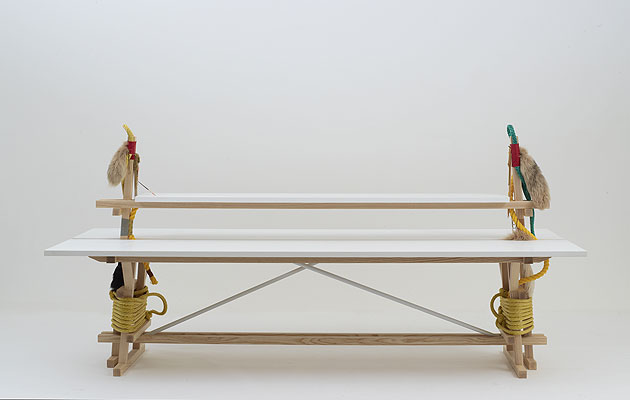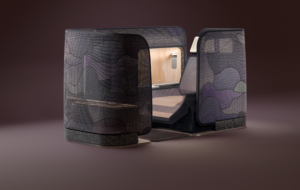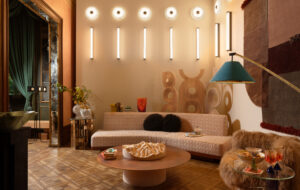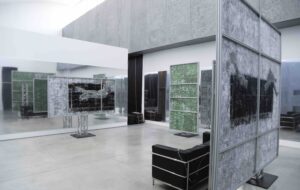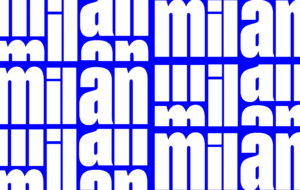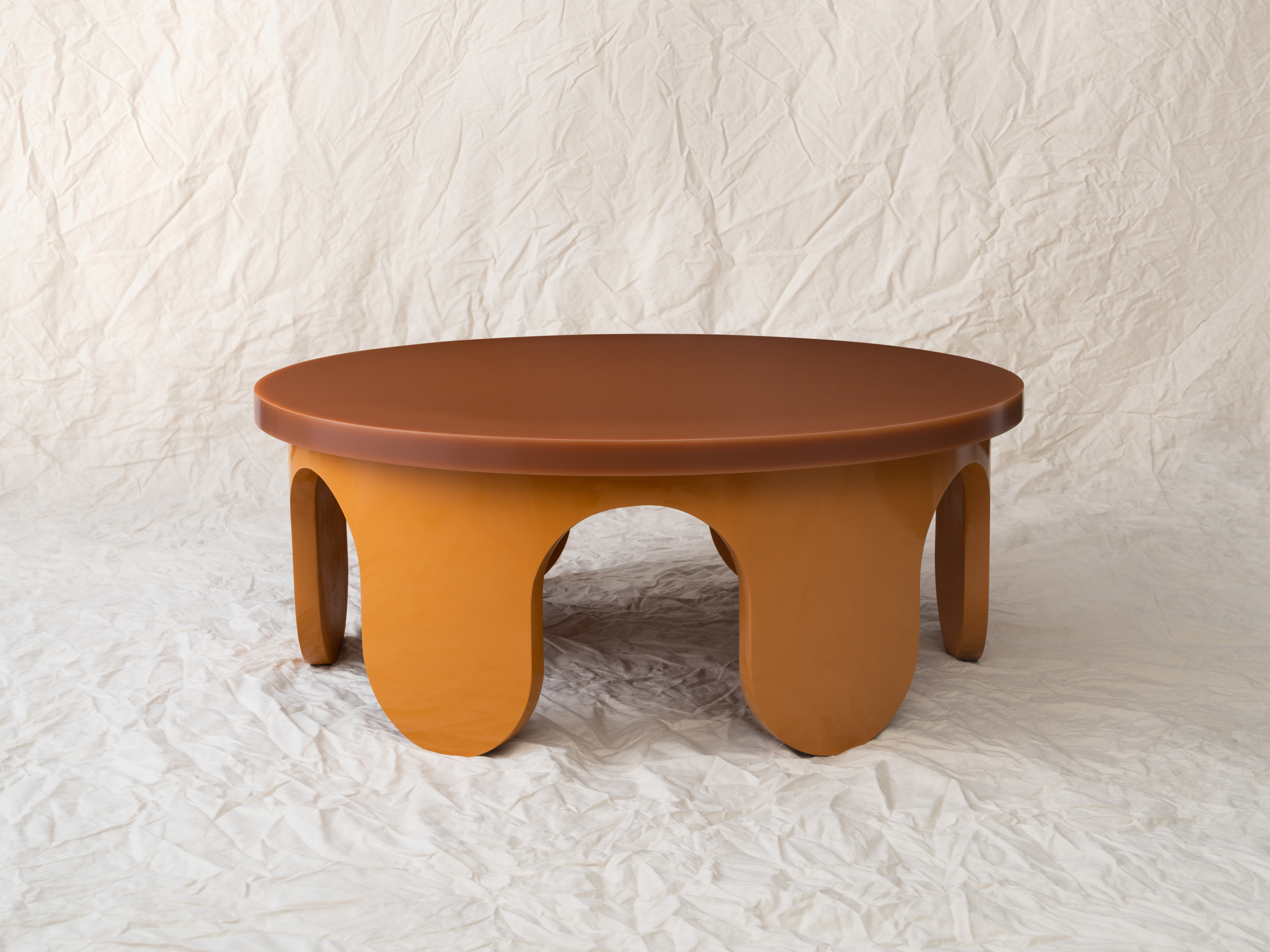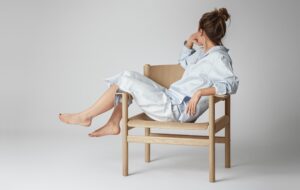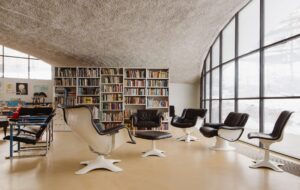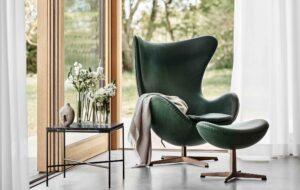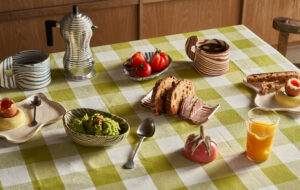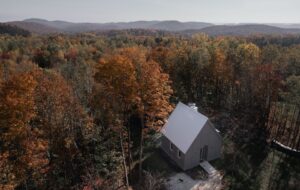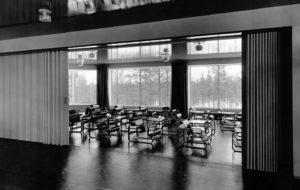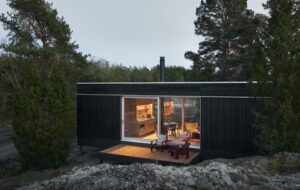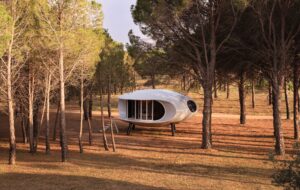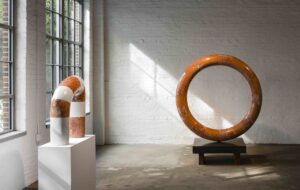|
|
||
|
A chance meeting with a 75-year-old Icelandic shark hunter was the starting point for Silent Village, Brynjar Sigurđarson’s latest design project. During a month spent wandering the remote fishing village of Vopnafjörđur in north-east Iceland, the Reykjavik-born product designer found the hunter making nets by hand and became intrigued by his technique. “He was preparing for the 100-day lumpfish season, using a tool called a netting needle. I got to learn his method and found it was really amazing, everything was very beautifully placed,” Sigurðarson says. The method involved intricately roping together thin nylon: “It was purely derived from function – the most efficient way of making the nets. But I felt I had discovered a pure Icelandic craft.” Five years after the encounter, Sigurđarson has developed his appreciation of the shark hunter’s craft into a series of 11 carefully composed furniture pieces for Galerie Kreo in Paris. Wood and Corian elements are bound tightly with 0.2mm-thick nylon threads – the same type used to make fishing nets – and covered by brightly coloured rope. “It’s a simple method but it’s very precise,” he says. “You need an almost microscopic level of detail to discover it.” The finished collection – which includes a shelf, entrance table and coat stand – is a symphony of variations on this method, exploring how it can be used to different effect.
The collection hints at the village’s life and industry, inviting us to decipher what the arrangements of forms might be. The arc and lines of the coat stand appear like a bow and arrow poised to shoot; the sides of the entrance table pierce down through the surface like a fishing spear, sporting a loop of rope and tuft of fur at their tops. Other embellishments include an assortment of weights, hooks, feathers and chains – all the paraphernalia you might find strewn around a working fishing harbour. But Sigurđarson’s designs introduce them with a modern, even luxurious, effect with elements in printed silk, brass and copper. Based on a purely visual understanding of the objects, machinery and traditions he saw in Vopnafjörđur, Silent Village is a designer’s assimilation of an industrial landscape. “I wanted to translate the environment into something that’s closer to me,” he explains. “Furniture, structures, but details too. I’m really obsessed with placing elements in a certain way.”
The visit to Vopnafjörđur was part of Sigurđarson’s final year at the Iceland Academy of the Arts – and elements of the trip have resurfaced in several of the designer’s projects since, including those prepared for his Masters at ECAL. For Like Animals (2011), the designer created a set of tools designed for an imaginary hunter who disappears to the forest once a year. The tools can be carried along in a fur backpack in the shape of an animal head, allowing the hunter to get closer to his prey. Other projects celebrate primitive life in more subtle ways. The charming Snail Thermometer (2011) is a coil of bimetallic strip that hangs on the wall. As the temperature rises, the coil unfurls, revealing a set of numbered degrees down its length. Tool Light (2010) also pares a useful object down to its essentials. The design is a re-imagined torch, a basic white lampshade mounted on the end of a wooden stick. Interrupting the streamlined shape is a simple toggle switch that makes an obvious point of how the object functions. Sigurđarson’s field trip may have been five years ago, but the designer thinks the impact of the people he met and life he observed in Vopnafjörđur will always remain with him. “At the opening of the Silent Village exhibition, I kind of felt that this journey was coming to an end,” he says. “But actually it’s very evident in everything I do. It affected me a lot creatively. And provided me with a method for analysing things.”
|
Image Fabrice Gousset
Words Riya Patel |
|
|
||

